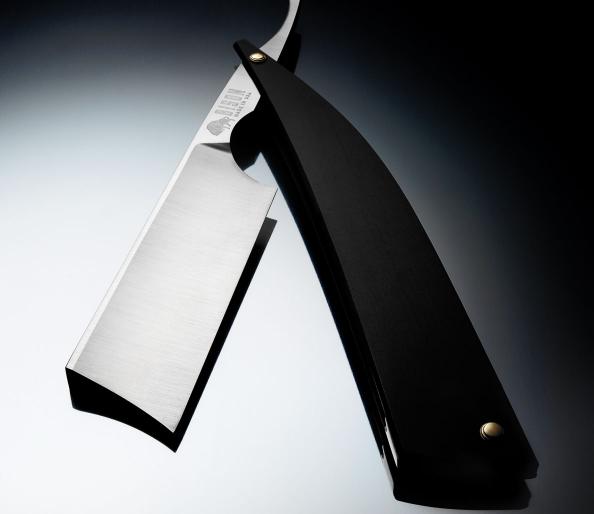
Sometimes it takes something super-gross to make you contemplate things about your body you never really thought about before.
Take this recent disgusting story out of Britain. Earlier this month, Mark Longley, a future groom from West Sussex, was enjoying a bachelor party with his closest male friends when, as friends often do when one of their own is on the cusp of a lifetime commitment to a woman he loves unconditionally, they duct-taped him to a wheelchair and glued their pubic hair to his face.
The groom's pubic hair beard–which was photographed and shared on Facebook by the alleged “best man” Steve West–featured the pubic hair of “around 40 men,” according to U.K. newspaper The Mirror.
Do you want to see it? Of course you kinda do. Okay, brace yourself.

Seeing this photo doesn't just make us grateful that we have friends in our life who love us enough never to put their pubes anywhere near our face. It actually got us thinking about pubic hair.
Which is weird, because who ever thinks about pubic hair? But when you start pondering it, you realize you have questions. Or at least we did. And maybe you've wondered some of these same things.
The following FAQ attempts to answer everything you didn't know and didn't realize you needed to know, but now it's in your brain and you can't ever unknow it, about pubic hair.
Why is pubic hair curly?
We talked to a lot of doctors, dermatologists, hair specialist, urologists, and pubic hair enthusiasts trying to find the answer. Most of them had no idea, and a few had educated guesses.
Marc Glashofer, a dermatologist and fellow of the American Academy of Dermatology, claims that the texture of pubic hair tends to be thicker and more coarse than hair on the rest of our body because of its origins as a buffer. “It prevents friction during intercourse that can cause skin abrasion and rashes,” he says. “More importantly, pubic hair serves as protection against bacteria and other pathogens.”
As for the curliness of pubes, Brian Steixner, M.D., Director of the Institute of Men's Health at Jersey Urology Group in Atlantic City, suspects it's because curly hair does a better job at trapping the pheromones secreted from sweat glands around the groin area.
Three million years ago, when human beings were still walking around half-naked, a nice pungent odor wafting up from your junk was considered an aphrodisiac.
So my great-great-great-great-great-great-great-grandmother liked a guy with stinky pubes?
That's one way to look at it, yes. It was also how your great-great-great-great-great-great-great-grandfather announced to her that he was sexually mature enough to procreate, says Andrew Thompson, author of What Did We Use Before Toilet Paper?: 200 Curious Questions and Intriguing Answers.
(For more terrifying true tales about your genitals, find out what this Doctor Reveals about the 5 Craziest Penis Conditions He's Ever Treated.)
“Some anthropologists have suggested that pubic hair in males might have been an ancient way of impressing and deterring other males who were in competition with them,” says Thompson. “Similar to a lion's mane.”
Wow. Okay, thanks, you just ruined The Lion King for me.
Sorry. Well here's something that might make it worse.
Uh-oh. Do I want to know this?
Maybe. Robin Weiss, a Professor of Viral Oncology at University College London, proposed an interesting theory in the 2010 issue of the Journal of Biology. Have you ever noticed how human pubic hair kinda looks like gorilla hair?
Um . . . no.
Well it does. Maybe not the curliness, but the coarse texture. It turns out that pthirus pubis –or as you probably know it, “crabs”–is something we acquired, in Weiss' words, “probably directly from gorillas.”
Whhhhhhat?
“Because they were already adapted to the coarse body hair of the gorilla,” Weiss wrote in his study, “crabs would have found a suitable niche in human pubic hair.” So basically, if you've ever had pubic lice, you can thank a gorilla.
Wait, what are you telling me? Our ancestors weren't, you know . . .
No, no, no, nothing like that. But they did eat gorillas, and came into regular contact with gorilla carcasses. Which made it possible for crabs to make the leap, and feel right at home on our gorilla-esque pubes.
All this talk about crabs makes me want to shampoo my pubic hair. Which, now that I think of it, is not something I do all the time. Or really ever. Should I be?
Shampooing isn't necessary, says Ricardo Mejia, M.D., a dermatoligist from Jupiter, Florida. A little soap and water is more than enough. “The shampoos these days are used to maximize volume in the hair, to give it excellent shine and bounce,” he says. “Unless you are a pubic hair model, I don't see why it is necessary to shampoo.”
A pubic hair model? Is there, um . . .?
No, there's no such thing as a pubic hair model. He just made that up.
How long is a typical pubic hair?
Most pubes grow between half an inch and 1.5 inches, according to Steixner.
“Most” pubes? Are you being cute? Do some grow longer?
Well, if the Illustrated Book of Sexual Records–published in 1983 by G. L. Simons–is to be believed, a young lady named Maoni Vi of Cape Town, South Africa once possessed pubic hair that dangled down to her knees. A stunning 28 inches of lustrous pubic locks.
I'm going to throw up a little.
Relax, you'll never have this problem. As Glashofer reminds us, “Each hair follicle on our body is genetically programmed to have different growth cycles which influences the hair length. For instance, hair on the back of the head has a slightly different programming compared to those on the front. So too, the hairs of the pubic region have been biologically programmed to grow only to a certain length.”
If you have anything to worry about, it's going bald down there.
Bald? Like my pubes are going to fall out?
Maybe not as dramatically as it happens to your head. But yeah, as you age and your testosterone decreases–usually in your 50s–you'll start to notice things are a little less bushy down there.
“It's a slow progressive loss,” Steixner explains. “It's not so much balding as a progressive thinning of hair until it appears to be almost non-existent.”
Oh my god! I'm going to be one of those old geezers with a pube comb-over!
Not if you just let nature take its course. Also, don't comb your pubes. What's wrong with you?
I'll just shave it all off. Make a preemptive strike. Like balding guys do.
(Related: Why Shaving Your Head If You're Balding Might Be the Best Decision You Ever Make.)
Sure, knock yourself out. But . . . be careful, okay?
Why? Why do you care?
Well, there's this study–
Oh come on! You guys and your studies!
We're just trying to protect you.
Whatever, dad. Okay, fine, give it to me. What does the study say?
A 2013 study conducted by the University of California San Diego found that between 2002 and 2010, groin shaving mishaps requiring emergency room visits increased five-fold between 2002 and 2010. With the dangers involved, is it any wonder that Pubic Hair Is Making a Comeback?
Wait, back up. Define “mishap.”
Well, in 83{c754d8f4a6af077a182a96e5a5e47e38ce50ff83c235579d09299c097124e52d} of penile injuries, there was a razor involved. Scissors were responsible for 22{c754d8f4a6af077a182a96e5a5e47e38ce50ff83c235579d09299c097124e52d} of the balls-bleeding. And hot wax for just 1.4{c754d8f4a6af077a182a96e5a5e47e38ce50ff83c235579d09299c097124e52d} of reported ER visits. Which is still a lot, if you think about it. Were these people trying to wax their balls on the cheap? Get a candle and . . .
Were they drunk?
Possibly. But even sober, shaving down there is a risky proposition. Especially your balls.
“The skin on the scrotum is very unique, in that it has nooks and crannies,” says Steixner. “Those areas have been proven to trap huge amounts of bacteria. When you shave that pubic area, even a minor cut or laceration can cause bacteria to get inside there, and can very easily cause cellulitis, abscesses, and in very rare condition, something called Fournier gangrene.”
I've never heard of that.
It's not pretty. Steixner calls it “flesh eating bacteria of the balls.”
You're being dramatic.
Take a moment right now and Google “Fournier gangrene.” Do an image search.
Okay, fine.
We'll wait.
Well, that's just . . . OH MY GOD, WHAT AM I LOOKING AT?!!!
We know. We're sorry.
MY EYES! MY EEEEEEYES!!
We're sorry you had to see that. But it's important that you're aware of the risks.
What in the actual fuck is that all about?
Steixner tells us that it's actually “quite common. I see it once every three months. And it's not a joke. I've seen people die from this.” It happens primarily in people with weakened immune systems, like severe diabetics or HIV carriers. But in some cases, it can happen to perfectly healthy guys.
“It starts with a knick to a hair follicle during shaving,” Steixner says. “A very specific bacteria gets under the skin, and it travels fast. It basically starts to eat away at all the skin.”
And how do they treat it?
You really want to know?
Um . . . maybe?
“We have to surgically remove all of the skin on a man's scrotum,” says Steixner.
Nooooooo!!
We're not saying this is common, or it's definitely going to happen to you. If you insist on a shorn scrotum, Steixner recommends going for an electric razor over a straight razor. And we've got some great advice on How to Prevent Razor Burns.
But here's a word of warning from Steixner: “It's Friday night,” he says. “You're getting ready to head out and maybe meet some girls. You're in the shower, and you decide, what the heck, I'll give the boys a quick shave. The next thing you know, it's Sunday, and you're in the ER with no nuts.”
Can this story be over now? I need a stiff drink.
Absolutely. Let's all read the 52 Ways to Control and Conquer Stress together and forget this entire FAQ ever happened.
SOURCE: – Read entire story here.





